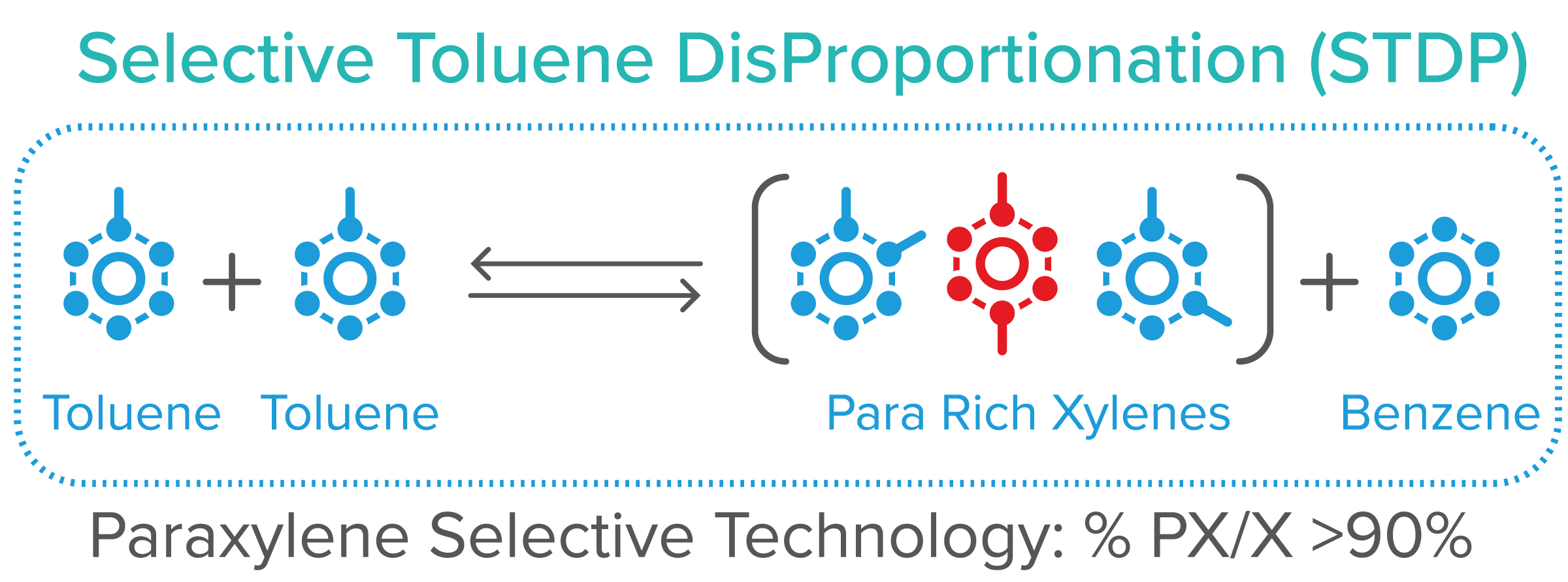In extractive distillation, the addition of a selective solvent modifies the vapor pressures of the hydrocarbons in the feed in such a way that paraffinic and naphthenic components can be separated from the aromatics by distillation.
Morphylane® technology is the most cost effective solution for production of high purity benzene and toluene from C7- aromatics fractions thanks to the recognized superior characteristics of its patented solvent (N-Formylmorpholine).
Achieves 99.95%+
benzene purity
World's leading technologies
for the production of high-purity aromatics
No solvent decomposition,
corrosion or toxicity issues
